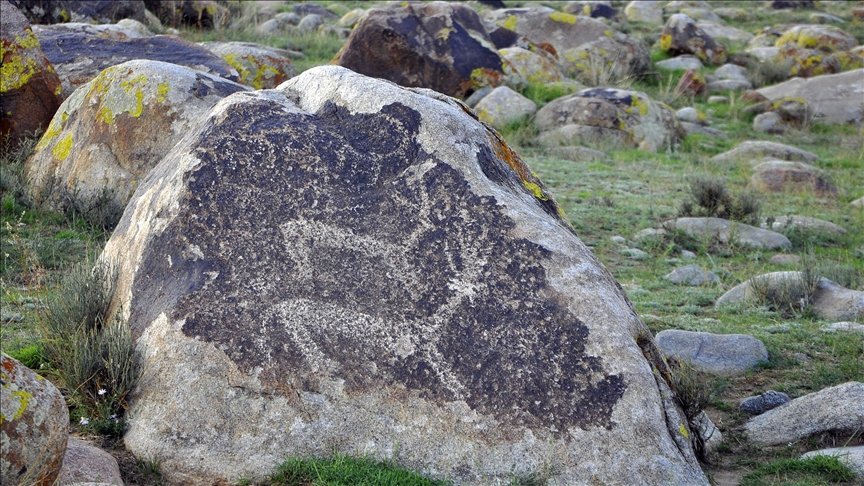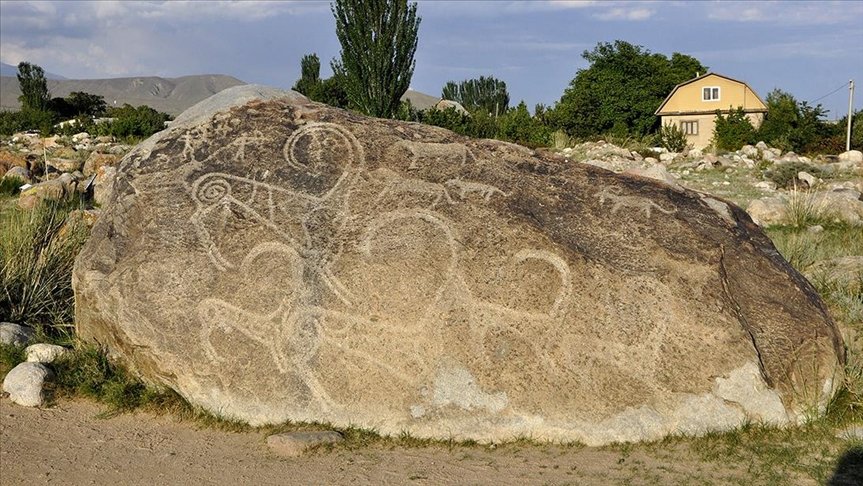BISHKEK, Kyrgyzstan
Kyrgyzstan is home to hundreds of petroglyphs, rock carvings of different shapes and sizes that are considered to be the oldest work of art on earth.
There are hundreds of rocks with pictures ranging from 30 cm (11.8 inches) to 3 meters (9 feet 8 inches) in size at the open-air Cholpon-Ata Petroglyph Museum in the town of Cholpon-Ata, 260 kilometers from the capital Bishkek.
The petroglyphs are images created by removing part of rock surfaces by incising, pecking, carving, and abrading.
The works in the museum depict hunting culture, scenes of animal fighting, symbolic lines, circles and rectangular shapes.
While the drawings reflect the living conditions of the people of the bygone era, they also shed light on unknown aspects of ancient life and beliefs, as well as history of the region.
Rocks and stones similar to petroglyphs in the museum, which is spread over an area of 42 hectares (104 acres), are found in eight different locations in the Central Asian country’s Talas, Issyk Kul and Jalal-Abad regions.
The museum, which also includes tombstones, allures visitors from all over the world every year.

Speaking to Anadolu Agency, Janat Soodokeyev, an expert in the field and director of Issyk Kul State History and Culture Museum, said visitors from Turkey showed great interest in the rock paintings.
“The Cholpon-Ata museum is of great importance for the Kyrgyz people … the past of our ancestors and ancient Turkish history lies here,” he said.
The figures and images used on petroglyphs are still widely used in Kyrgyz traditional tents and carpets, he added.










Discussion about this post